Long before high-tech factories and modern metallurgy, Japanese swordsmiths were turning the simplest of materials old nails, broken tools, and sand into blades of legendary status. The iconic samurai sword, or katana, is not only a symbol of Japan’s warrior past, but also one of the most enduring examples of human craftsmanship, patience, and artistic vision.
At the heart of this tradition lies a remarkable technique called the tatara method, a grueling, multi-day steel-forging process that transforms raw materials into tamahagane the heart and soul of every true katana. This ancient art form dates back over a thousand years and still survives today, passed down by master smiths committed to preserving one of Japan’s most sacred traditions.
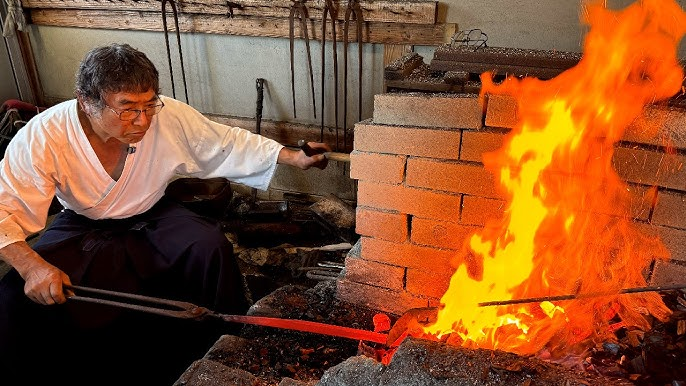
The Tatara Method: Steel Born from Fire
The tatara method begins not with ore, but with ironsand a fine, black mineral rich in iron that’s found in riverbeds and coastal areas of Japan. Swordsmiths combine this with charcoal in massive clay furnaces called tatara. Over the course of three continuous days and nights, the materials are heated and managed by a team of highly skilled workers who must constantly adjust airflow and temperature to create the ideal environment for steelmaking.
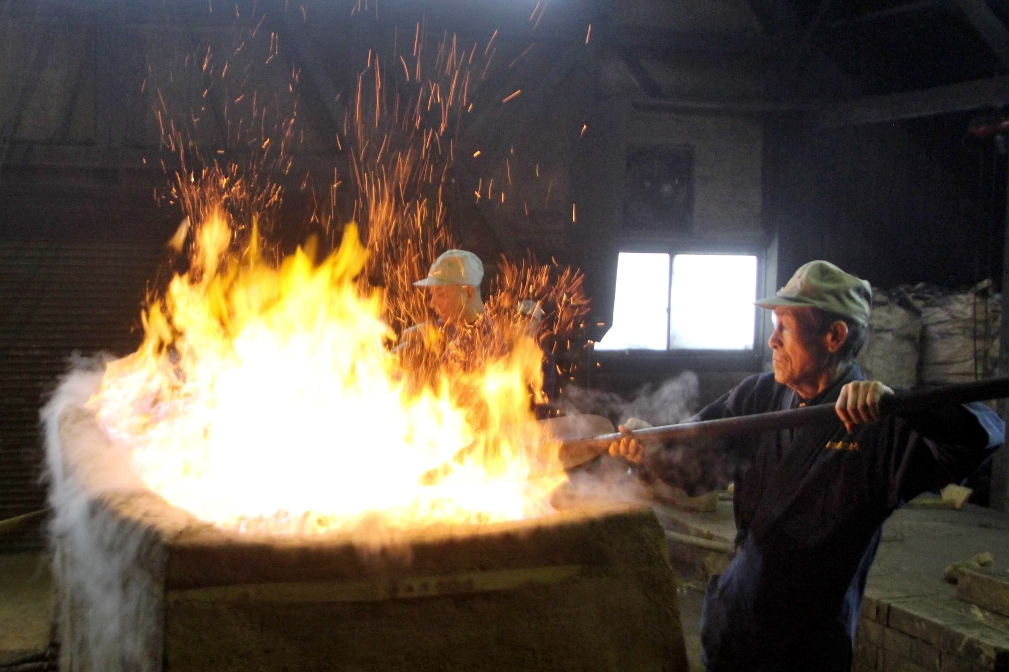
This ancient process requires immense skill and stamina. Temperatures inside the tatara can reach up to 2,500°F (1,370°C), and even a small mistake can ruin an entire batch of steel. Once complete, the clay furnace is broken open to extract the tamahagane a glimmering, glass-like steel that contains the perfect blend of hardness and flexibility needed for a samurai blade.
Video:
How Japanese Masters Turn Sand Into Swords
Folding the Soul of the Sword
Once the tamahagane is ready, it’s not simply hammered into shape. The steel is folded repeatedly, often thousands of times, to refine its internal structure. This folding removes impurities and creates layers dozens or even hundreds that give the sword its unique strength and grain pattern.
Each fold is deliberate. As the blade is folded, hammered, heated, and cooled, it becomes stronger and more flexible with every pass. The process also distributes carbon more evenly throughout the metal, ensuring that the blade won’t shatter on impact while still holding a razor-sharp edge.
The resulting layers create stunning wave-like patterns known as hada, which can be seen on the surface of a polished sword. These are not merely decorative they are physical records of the blade’s creation, a visual testament to the work of the smith.
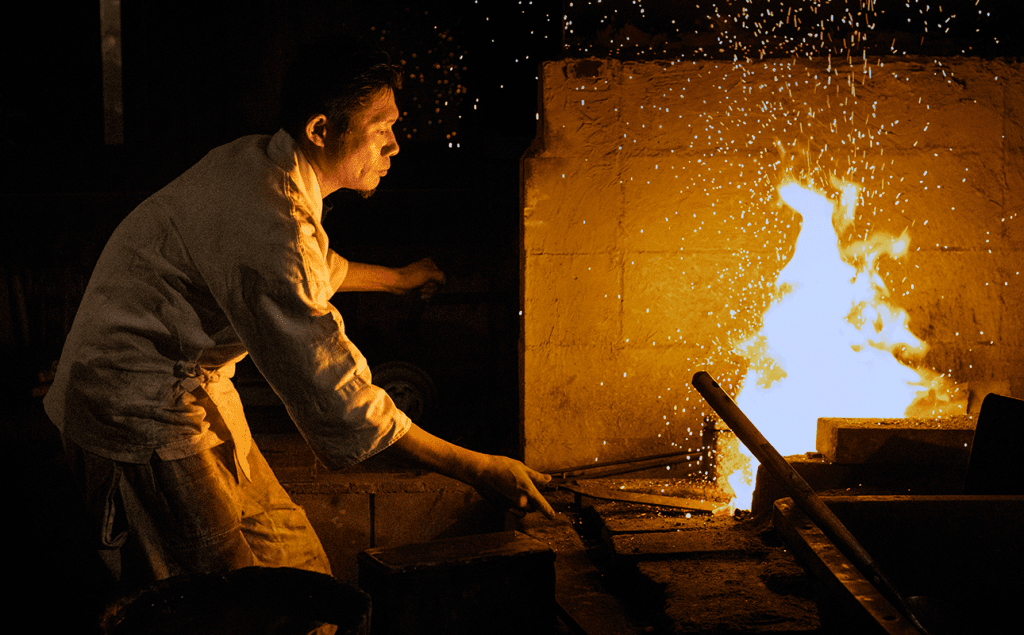
Form Meets Function: Crafting for the Samurai
The completed blade is not just a piece of metal it’s a functional piece of art. Samurai swords are carefully shaped to balance elegance, speed, and cutting power. The curve of the blade, its point, and the careful polishing all contribute to its lethality and beauty.
But the sword’s importance went beyond the battlefield. In samurai culture, the sword was seen as an extension of the soul. Carrying a katana was a mark of honor and status. Owning one meant holding a piece of heritage forged by the hands of masters.
Each blade was signed by the smith, and some of these names like Masamune and Muramasa have become legendary, even centuries later.
Video:
Making Traditional Japanese Steel (Tamahagane)
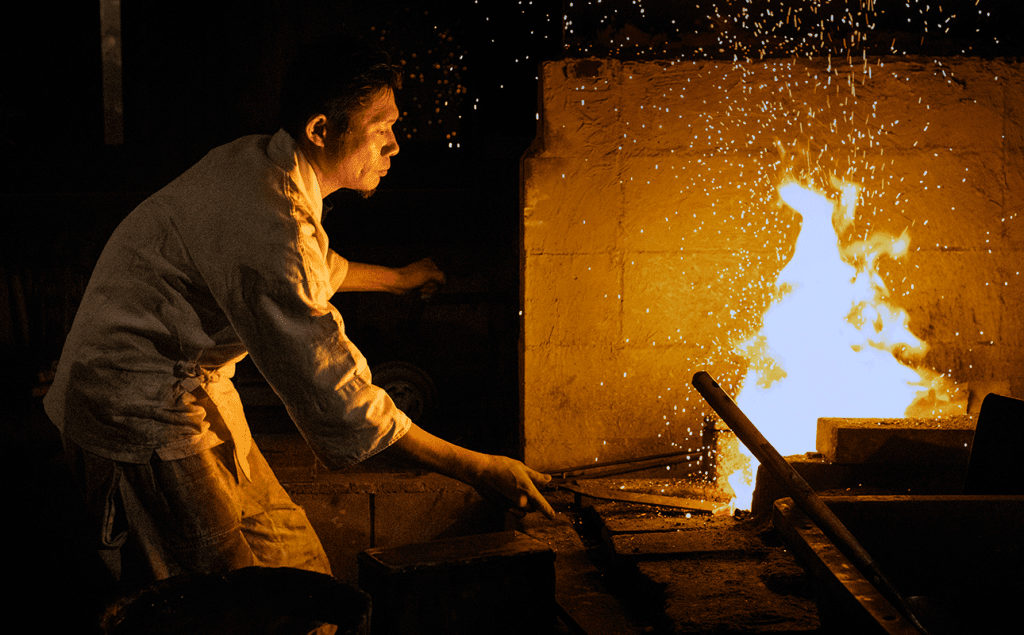
A Tradition Kept Alive
Despite the rise of modern weapons, the tradition of Japanese sword making never disappeared. Today, a small number of licensed master swordsmiths in Japan continue to craft swords using the tatara method and time-honored folding techniques. Their work is protected and supported by cultural preservation laws and national pride.
These artisans view their work not just as manufacturing, but as a sacred duty one that preserves a direct link to Japan’s past. Every sword they produce is a continuation of an ancient story, forged in fire, cooled in tradition, and sharpened by purpose.
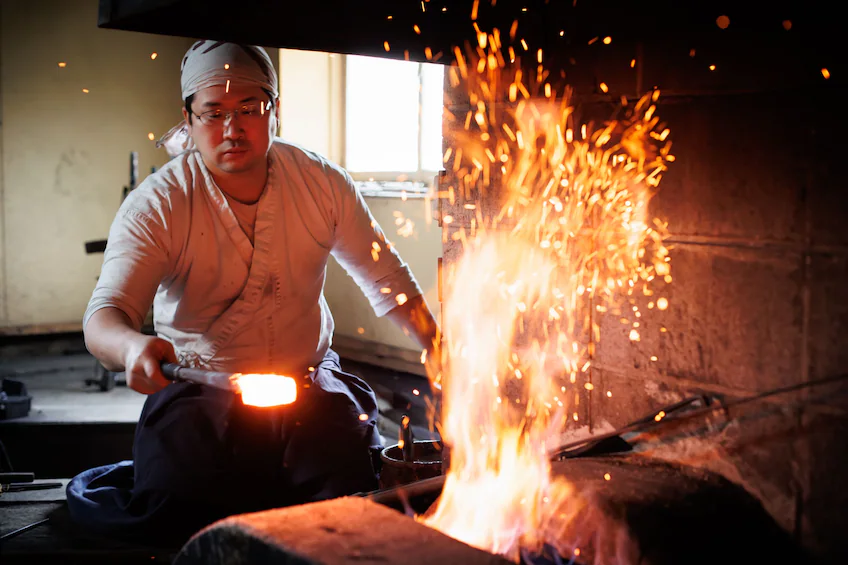
Conclusion: Steel, Spirit, and Survival
The Japanese katana is more than a weapon. It is a symbol of heritage, a triumph of metallurgy, and a living testament to craftsmanship. From the humble beginnings of discarded metal and black sand, to a gleaming blade folded thousands of times, every step of the process speaks to a cultural dedication that is almost spiritual.
In an age of mass production, the survival of this traditional art reminds us that beauty and function, when paired with patience and skill, can create something truly timeless.



